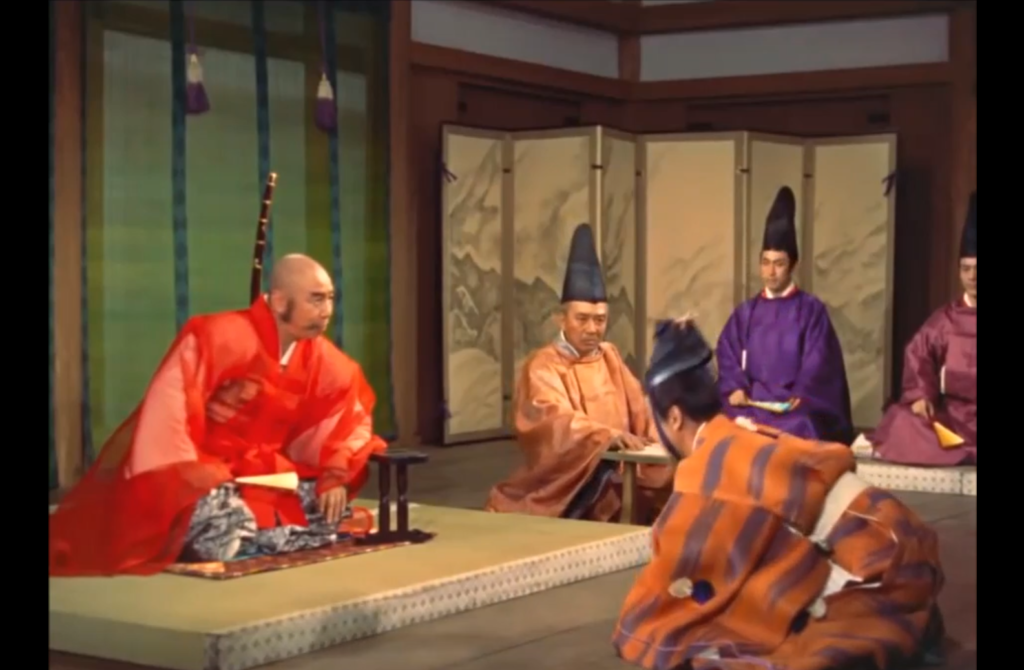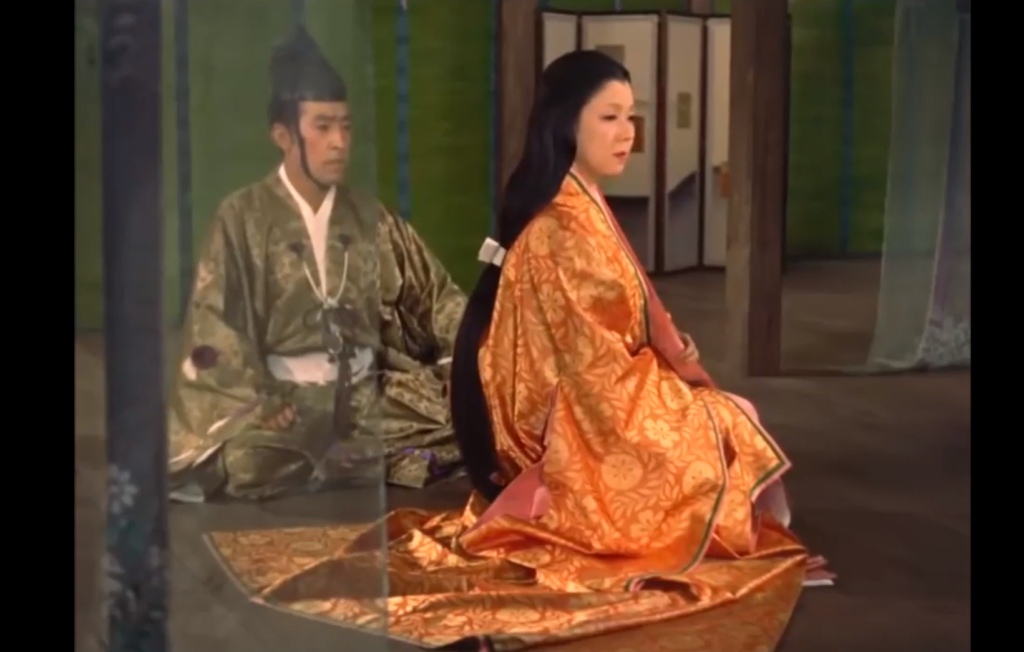“This is the house of my family. Here you will be safe.”
|

Synopsis:
After remaining loyal to his emperor during an unsuccessful uprising, Samurai Moritoh (Kazuo Hasegawa) is offered his choice of rewards. He asks for the beautiful but already-married Lady Kesa (Machiko Kyo), and will stop at nothing to win her love.
|
|
Genres, Themes, Actors, and Directors:
- Japanese Films
- Obsessive Love
Response to Peary’s Review:
As Peary notes, this “simple story” of obsession and loyalty in 12th century Japan would probably “work better as a play”, but the “acting and characters are so interesting and the color photography is so gorgeous… that one can have no complaints.” You’ll be frustrated by Moritoh’s stubborn obsession (he “doesn’t understand the workings of [his wife’s] heart”), impressed by Lady Kesa’s fierce dedication to her kind husband, and curious to see how the story resolves. Gate of Hell holds a unique claim-to-fame as the first Best Foreign Film Oscar winner.
Redeeming Qualities:
- Beautiful cinematography and sets

- Interesting characters who make unusual choices

Must See?
Yes. It holds a special place in movie history, and should be seen by all film fanatics.
Categories
- Foreign Gem
- Oscar Winner or Nominee
Links:
|
One thought on “Gate of Hell (1954)”
Ultimately a must for a number of reasons – though I do think it will be somewhat trying even for real film fanatics.
First of all, we have an opening half-hour of Japanese clan rivalry which is hard to follow. Then, luckily, we discover that the details of this rivalry are not all that important – all we need to know is that a hero emerged.
From here on, the story is clear. That said, ffs unfamiliar with earlier styles of Japanese filmmaking had better be blessed with patience. The real satisfaction only comes with the film’s conclusion.
At the end of the film, Lady Kesa’s unusually sensitive (for a Japanese, esp. of this era) husband wonders why she did not come to him for help – something we wondered ourselves, except we knew something about Lady Kesa: she was not naive, and she knew a brick wall when she saw one.
The film does make for compelling viewing if you stick with it.
Though the male leads are fine (Hasegawa is great at playing an A-1 a-hole, and Isao Yamagata is wonderfully stalwart), Machiko Kyo steals the film. Though it’s not so surprising that this is the same actress from ‘Rashomon’ three years prior, it’s shocking to realize that this is the actress who would give such a polar-opposite performance three years later in ‘Street of Shame’.
I don’t agree with Peary that this would work better as a play. It works fine as a film. You just have to get through that first half-hour – which doesn’t take much.
[A word about the translation in the print used on IFC. The translation often simply omits many responses, etc., and viewers may wonder why. For a period piece, the Japanese used in the film is simple and modern. What is omitted in translation seems to be considered fairly obvious in meaning. That’s certainly true, even if some of the texture is lost.]